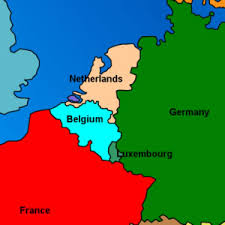This week the City of Paris, france, hosts the 21st UN Conference on Climate Change, where about 190 countries will undertake to come to an arrangement to keep global warming below 2 degrees Celsius.
There are some hopeful signs: China, for instance, whose rapid industrial development in past decades has made it spew CO2 like nobody’s business, has recently started an ambitious program to install a number of massive windmill parks, acting on complaints from citizens in particularly the north of the country that they are having serious breathing problems and can’t see farther than 300 feet. Getting the power from the parks to the consumer is still a bit of a puzzle, but the important thing is that it shows China now also recognizes that something needs to be done.
2030 is the target date for most national and international greenhouse gas reduction programs, but 15 years may be too long a wait for Greenland’s Zachariae Isstrom glacier, which is melting at an rapidly increasing rate. The glacier holds enough water to raise ocean levels by a foot and a half, and double that if its neighboring glacier goes the same way.
This prospect  is particularly alarming to low-lying countries such as the Netherlands, a 4-hour drive north of France, the greater part of which lies below sea level as it is. Consequently, the Dutch have gained an international reputation for their dike-building skills, but there is a limit to the height dikes can be built up, before you end up with more dike than country. Not surprising then that they are in the forefront of developing new methods to reduce greenhouse gas emissions.
is particularly alarming to low-lying countries such as the Netherlands, a 4-hour drive north of France, the greater part of which lies below sea level as it is. Consequently, the Dutch have gained an international reputation for their dike-building skills, but there is a limit to the height dikes can be built up, before you end up with more dike than country. Not surprising then that they are in the forefront of developing new methods to reduce greenhouse gas emissions.
They are experimenting, for instance, with generating power from living plants using the electrons released when certain bacteria consume organic matter. At this point, the power produced is not impressive – just enough to power 200 LEDs – but, as the Chinese proverb goes, the longest journey starts with a single step.
They have also come up with a method to produce natural gas from the methane released by the droppings of their 4 million cows. Like CO2, methane is a greenhouse gas. The quantities released in the atmosphere, much of it from livestock dung, are much less than for CO2, but it is much more agressive. As natural gas, however, it burns much cleaner than coal, so this approach has double greenhouse gas -reduction potential.
But how tough the assignment of our representatives in Paris is, may be evidenced by the fact that, in spite of all this, consumption of coal in that country has increased by 25% in the first half of this year.
The increase is driven by a big drop in the price of coal – as much as 38% since 2008. So the power companies are buying more of it, enabling them to supply more energy at lower cost. The conundrum is that coal prices are low because demand is low and demand is low, at least in part, because of climate change concerns.
Go figure.
A bit of happy local news that did not fit the broadcast: the only jaguar known to live in the US, right here in the Santa Ritas, has finally got a name: it is El Jefe, meaning the Boss, because it is at the top of the food chain. Not counting us, of course.
Last but not least: the KXCI Winter Drive is in full swing. Please visit KXCI.org call 520-623-1000 and support your community radio station!

